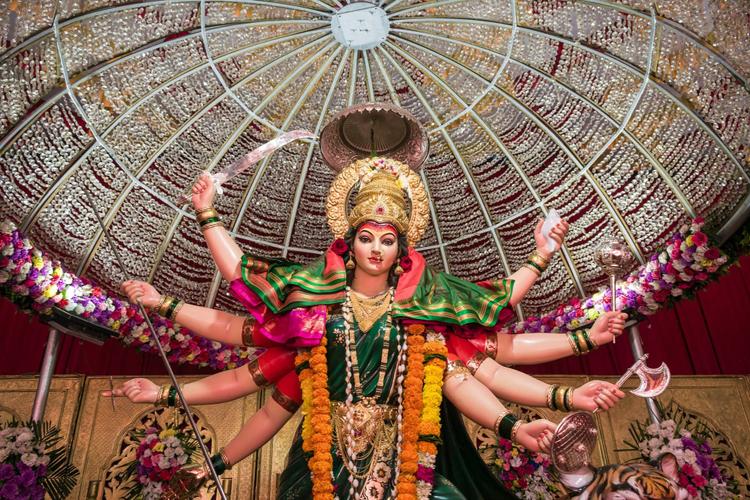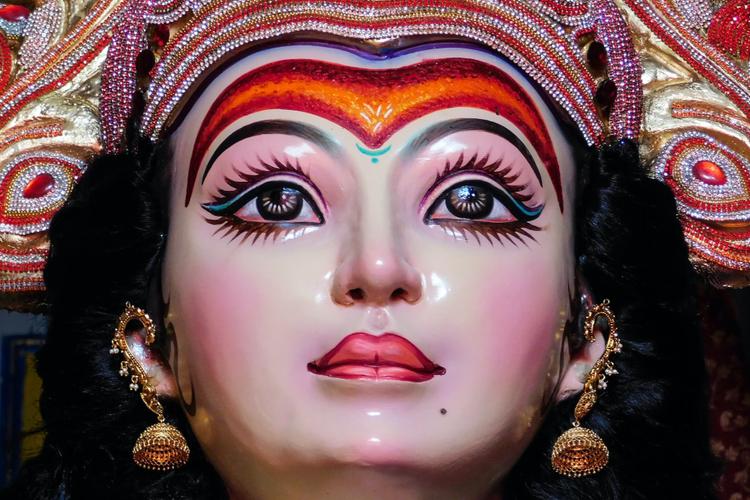Celebrating the strength of a woman the festival of Navratri is dedicated to Goddess Durga who defeated the demon Mahishasura. The festivities last for long nine days in which the nine distinct forms of the goddess are worshipped. Being one of the most important festivals in India it has many underlying meanings and distinct versions of beliefs in different parts of India. We have witnessed this at many festivals. Each region celebrates the festival in a distinct light and has a different belief. Just like so even this festival has a different hue in different regions. If you are curious to know the distinct belief and the stories then you are in the right place. This article has almost all the information about Navratri traditions that you need to know about this day and the significance of this festival in the lives of the people in India.
The northern region of India perceives the story as Mahishasura a demon praying to lord Brahma asks for a boon. The boon that we wished for was to be immortal which was granted by Lord Brahma with the condition that only a woman can kill him. Mahishasura filled with pride accepted the condition as he thought women to be powerless. He thought that he is invincible so he thought that he has obtained the power of eternity. Soon, he started killing and harassing innocent people and set out to win all three Kingdoms of heaven, hell, and the mortal world or Lokas. The gods in Swargaloka appealed to Lord Shiva to help them defeat the demon. To protect the world from the atrocities of Mahishasura, the Trinity of Brahma, Vishnu, and Shiva united their powers and created a divine female warrior, known as Goddess Durga. Mahishasura, when he saw the divine beauty of Goddess Durga, got mesmerized and he approached her with the intention of marriage. The Goddess was enraged and she declined his offer and challenged him for a battle. The battle went on for nine days and nine nights. It was on the tenth day that she defeated Mahishasura and the last day is celebrated as Vijaya Dashami.
The story of Goddess Durga and Mahishasura is a little different in the eastern region of India. Daksha, the King of the Himalayas had a beautiful daughter Sati. She was a devotee of Lord Shiva she wanted to marry him and worshipped him virtuously. Lord Shiva was pleased by her prayers and they got married but the King was against this union. So, he broke all of his ties with his daughter Parvati. One day Daksha organized a Yagna and did not invite Shiva he even insulted him in the ceremony. Furious at this rude behavior of her father, Sati ended her life by jumping into the Yagna fire and united with eternity. However, she reincarnated and again won Shiva as her groom, and peace was restored. It is believed that since then, she come home every year with Ganesh, Kartik, Saraswati, and Laxmi, to visit her parent's home during Navratri. Durga is one of her forms she slays the demon Mahishasura who created havoc in the three kingdoms and then visits her parent’s house.
Yet another legend of Navratri relates to the Hindu epic Ramayana. It goes that Lord Rama worshipped Goddess Durga in nine aspects, for nine days, in order to gather the strength and power to kill Ravana. He wanted to end Ravana the demon king of Lanka who abducted Sita his wife and restore peace. Those nine nights became to be known as Navratri and the tenth day, on which Lord Rama killed Ravana, came to be called Vijayadashmi or Dusshera, signifying Rama's (good) triumph over Ravana (evil).
All these stories may have a distinct flavor to them but all of them have the same essence. The stories integrated together express the victory of good over evil. It also shows the strength of a woman and it has motivated many women even to this day. The nine forms of the Goddess represent every woman and it shows how a tender woman can take the form of a warrior when provoked and threatened. The significance of day is intense and till day has kept motivating and blessing the people.





